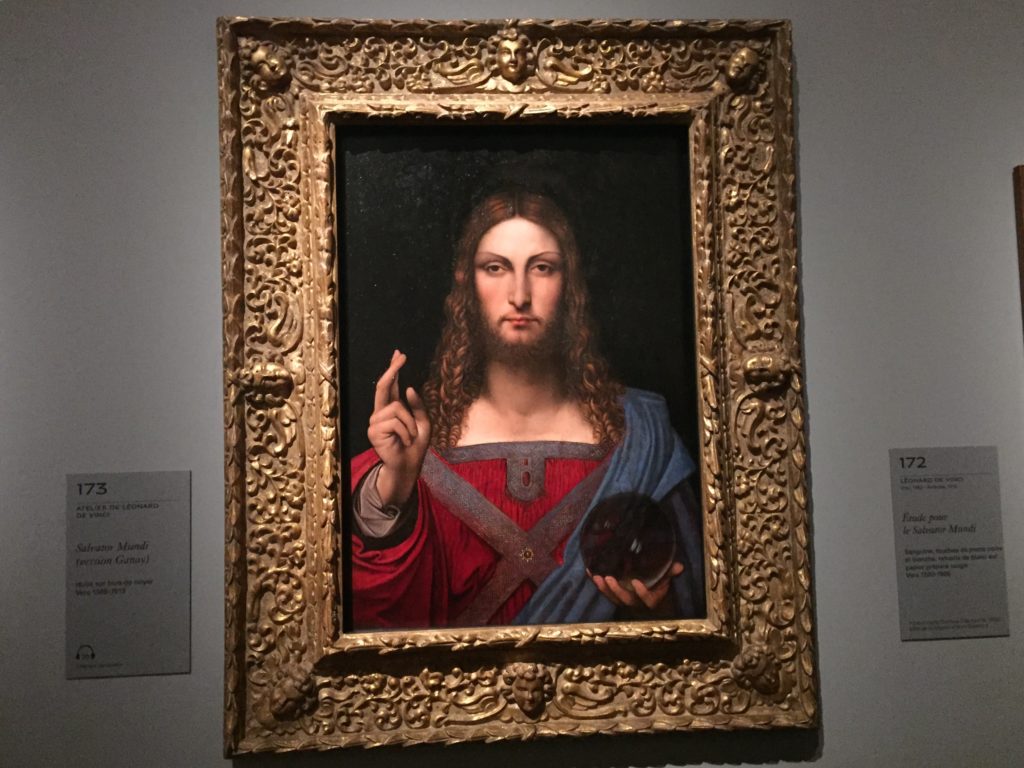
Breaking Down the Price: The Story Behind the Most Expensive Da Vinci Painting
The Salvator Mundi, believed to be the most expensive da Vinci painting ever sold, captures more than just the artistic skill of Leonardo da Vinci; it represents a fascinating piece of Renaissance history. Completed around 1500, this painting presents Jesus Christ in the attire of the era, bestowing a benediction with one hand while holding a crystal orb in the other. It's not just its detail and historical value that make it remarkable but also the journey it has endured—from being considered a copy to being recognized as an original work by most leading scholars. At 45.7 cm by 65.7 cm and painted on walnut, the piece has undergone extensive restorations to reveal its true beauty, further solidifying its significance in the art world.
This narrative explores the intriguing story behind what is considered the most expensive painting ever sold, delving into its rich history, the unprecedented sale that marked it as the most valuable painting in the world, and the controversies that surround its authenticity. Moreover, we'll uncover its current whereabouts and how enthusiasts can experience some of Leonardo da Vinci's most famous art through MiniMastersArt.com.
The History of 'Salvator Mundi'
The journey of "Salvator Mundi" from a relatively unknown piece to the most expensive da Vinci painting is a tale of discovery, restoration, and escalating value.
Initial Discoveries and Transactions:
- In 2005, dealer Alexander Parish purchased the painting for less than $10,000, unaware of its true value.
- The painting was originally acquired for the collection of Sir Francis Cook in London by Sir John Charles Robinson in 1900, marking its first confirmed record in modern times.
- Interestingly, the painting was bought online for just $1,175 at an auction in New Orleans, highlighting its obscure status at the time.
Historical and Artistic Significance:
- Attributed to Leonardo da Vinci and dated to c. 1499–1510, "Salvator Mundi" depicts Jesus Christ in Renaissance attire, symbolizing the Saviour of the World.
- It is an oil painting on a walnut panel, measuring 45.7 cm × 65.7 cm, showcasing Leonardo's mastery in portraying divine subjects with humanistic traits.
- The painting was likely commissioned by Louis XII of France around 1505, later becoming part of Charles I of England's collection, underscoring its royal provenance.
Provenance and Controversy:
- The painting's provenance is shrouded in mystery, with a nearly 400-year gap in its recorded history, leading to speculation about its authenticity.
- Claims of its appearance in the inventory of Charles I of England in 1650 were contested, suggesting the listed work might have been another painting with similar iconography.
- Despite controversies, the painting's restoration and scholarly consensus have solidified its status as an authentic work by Leonardo da Vinci, contributing to its monumental valuation.
Record-Breaking Sale
On 15 November 2017, the art world witnessed a momentous event at Christie's auction house in New York, where "Salvator Mundi," attributed to Leonardo da Vinci, shattered records by selling for an astonishing US$450.3 million. This sale not only set a new benchmark for the most expensive painting ever sold at auction but also marked a significant moment in art history.
Sale Details:
- Price: Sold for $450,312,500 (including buyer’s premium).
- Auction House: Christie's, New York.
- Date: 15 November 2017.
- Duration: The bidding war lasted over 20 minutes.
- Bidders: A fierce competition between two bidders, with the winning bid surpassing the nearest competitor by $30 million.
Previous Records:
- Old Master Painting Record: Surpassed Peter Paul Rubens' "Massacre of the Innocents," which sold for $76.7 million in 2002.
- Leonardo da Vinci's Previous Record: Eclipsed the sale of "Horse and Rider," a work on paper, which fetched $11,481,865 at Christie's in 2001.
- Art Auction Record: Broke the previous record held by Picasso's "Les Femmes d'Alger (Version 'O')" which achieved $179,364,992.
Buyer and Seller:
- Purchaser: Believed to be Badr bin Abdullah, acting as a proxy for Saudi Arabian Crown Prince Mohammed bin Salman Al Saud.
- Seller: The painting was sold by the family trust of Russian billionaire Dmitry Rybolovlev, who had acquired it in 2013 for $127.5 million from Swiss art dealer Yves Bouvier.
This historic transaction not only underscores the painting's immense value and the fascination with Leonardo da Vinci's work but also highlights the unpredictable nature of art valuation and the allure of owning a piece of history.
The Impact of the Sale
The record-breaking sale of "Salvator Mundi" has not only captivated the art world but also sparked a series of discussions and concerns regarding the authenticity and valuation of artworks within the art market. Here’s what you need to know:
Questions of Authenticity and Market Dynamics:
- The sale raised eyebrows about the painting's genuineness, leading to a broader questioning of the art market's transparency.
- A magnificent marketing campaign, while effective, was criticized for potentially stretching the truth about the painting's provenance and Leonardo da Vinci's direct involvement, suggesting a need for more honesty in art marketing.
Market Transformation and Museum Collections:
- The aftermath of the sale hinted at a possible overhaul of traditional market categories, paving the way for innovative financial arrangements in art transactions.
- The intertwined relationship between museums and the marketplace now faces increased scrutiny, as the sale accentuates the challenges museums encounter in acquiring and safeguarding valuable pieces amidst soaring market values.
Display Plans and Cancellations:
- Initially, there were plans to showcase "Salvator Mundi" at prestigious venues such as the Louvre Abu Dhabi and the Louvre in Paris. However, both exhibitions were unexpectedly canceled, leaving art enthusiasts and scholars pondering the reasons behind these decisions and the painting's future public accessibility.
This sale's impact reverberates beyond the art world, highlighting the need for greater transparency and regulation in the art market, while also underscoring the ever-evolving relationship between art, its valuation, and public exhibition.
Controversies Surrounding Authenticity
The authenticity of "Salvator Mundi" has been a subject of intense debate and scrutiny, raising questions about its valuation and attribution to Leonardo da Vinci.
Studio Practices and Value Impact:
- Leonardo da Vinci's practice of working with assistants complicates the painting's attribution, potentially affecting its value significantly.
Provenance and Ownership Concerns:
- The painting's provenance is murky, with its current whereabouts unknown, further muddying the waters of its authenticity.
- Reports suggest ownership may lie with Saudi Arabian Crown Prince Mohammad bin Salman, adding layers to its complex history.
Technical and Stylistic Discrepancies:
- Critics argue the painting's stiff composition and unconvincing depiction of the glass orb deviate from Leonardo's known style.
- The orb's scientifically impossible reflection and the painting's altered composition over time have fueled skepticism.
- A lack of inclusion in the Louvre Museum's da Vinci catalog raisonné and the museum's decision against sole attribution to Leonardo highlight the controversies.
These points underscore the ongoing debates and controversies surrounding "Salvator Mundi," challenging its status as a work by Leonardo da Vinci and influencing its perception in the art world.
Current whereabouts and public viewings
Since its record-breaking sale in 2017, the whereabouts of "Salvator Mundi," the most expensive da Vinci painting, have been shrouded in mystery, sparking intrigue and speculation among art enthusiasts and scholars alike.
Public Appearances & Speculations:
- Last seen publicly during its sale, the painting has since vanished from the public eye.
- Rumored to be in Saudi Arabia, with plans for an art gallery in the works specifically to display it.
- British art historian Martin Kemp was reportedly invited to inspect the painting in Saudi Arabia, suggesting it's within the country.
- The painting's last rumored location was aboard the yacht 'Serene', owned by Saudi Arabian Crown Prince Mohammad bin Salman.
Future Viewing Opportunities:
- Saudi Arabia is constructing the Wadi AlFann cultural complex near AlUla, with expectations to open next year. A dedicated museum for "Salvator Mundi" is expected to be completed in 2024.
- As of now, there are no confirmed public viewing opportunities, with the painting's location and exhibition plans remaining undisclosed by its owner.
Previous Viewing and Speculation:
- Briefly exhibited at the Louvre Abu Dhabi in 2019, following a restoration process, but was removed without official explanation.
- Since late 2020, it has been in storage in Saudi Arabia, awaiting the completion of a museum and cultural center in Al-'Ula.
Shop MiniMasters Today!
At MiniMastersArt.com, art enthusiasts have the unique opportunity to bring the genius of Da Vinci into their homes with exquisite miniature reproductions. Each piece is crafted with meticulous attention to detail, capturing the essence and beauty of Da Vinci's masterworks on a scale that fits perfectly in your space.
These miniatures are more than just decorations; they're a testament to the enduring legacy of one of history's greatest artists. Don't miss your chance to own a piece of this legacy. Shop today to select your miniature Da Vinci painting and infuse your home with a touch of Renaissance brilliance.

Thank you for sharing your profound insights! Your breakdown has deepened my understanding in ways I couldn’t have imagined. I’ve explored a related topic on my blog www.illiciumlondon.co.uk/blog recently, and your perspectives would enhance the discourse. Let’s keep the dialogue going!